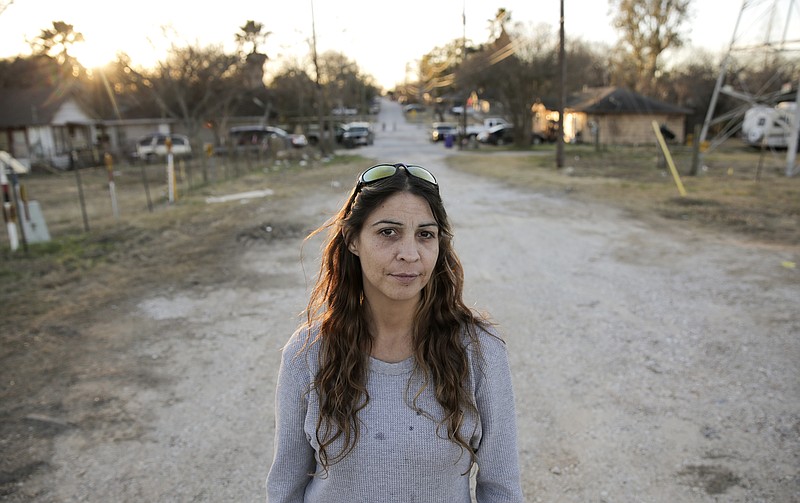HOUSTON (AP) — More than a half-year after Hurricane Harvey flooded America’s largest corridor of energy and petrochemical plants, records show the storm’s environmental assault was more widespread and severe than authorities publicly acknowledged.
Piecing together county, state and federal records, the Associated Press and Houston Chronicle catalogued more than 100 Harvey-related toxic releases — on land, in water and air — in metropolitan Houston, America’s fourth-largest city.
Most were never publicized. Only a few were investigated by federal regulators. State officials said they have investigated 89 incidents but have announced no enforcement actions.
Some 500 chemical plants, 10 refineries and more than 6,670 miles of intertwined oil, gas and chemical pipelines line the corridor. Nearly half a billion gallons of industrial wastewater mixed with storm water surged out of just one of these chemical plants.
The dozens of tons of chemicals unleashed — all self-reported by industry — include such proven carcinogens as benzene and vinyl chloride. Many affected plants are repeat environmental offenders.
Soil and water testing for contaminants by state and federal regulators was largely limited to Superfund toxic waste sites. Air sampling was more extensive, including flyovers, but officials released few details and repeatedly assured the public that post-Harvey air pollution posed no health threat.
The career civil servant who headed the U.S. Environmental Protection Agency’s regional office during Harvey, Samuel Coleman, now says those general assessments did not reflect local “hotspots” with potential risk to people.
The priority in the hurricane’s immediate aftermath was “addressing any environmental harms as quickly as possible, as opposed to making announcements about what the problem was,” Coleman said.
In hindsight, he said, it might not have been a bad idea to inform the public about the worst of “dozens of spills.”
Local officials said the state and federal government’s response to Harvey has weakened efforts by the city of Houston and surrounding Harris County to build cases against the companies and force them to follow through on cleanups.
“The public will probably never know the extent of what happened to the environment after Harvey. But the individual companies of course know,” said Rock Owens, supervising environmental attorney for Harris County, home to 4.7 million residents.
Regulators alerted the public to dangers from just two, well-publicized toxic disasters: the Arkema chemical plant northeast of Houston that exploded and burned for days, and a nearby dioxin-laden federal Superfund site whose protective cap was damaged by the raging San Jacinto River.
The chairman of the Texas Commission on Environmental Quality, Bryan Shaw, told a January legislative hearing he could not discuss those spills or possible sanctions while an after-action review is pending. The state said it has “a number of open investigations” but would not elaborate.
The limited extent of post-Harvey environmental testing by state and federal authorities was “unconscionable,” said environmental sociologist Scott Frickel of Brown University, especially compared to two previous major Gulf Coast hurricanes.
After Hurricane Ike hit Texas in 2008, state regulators collected 85 soil samples. More than a dozen violations were identified and cleanups carried out, according to a state review.
And after Hurricane Katrina’s floodwaters ravaged New Orleans in 2005, the EPA and Louisiana officials examined approximately 1,800 soil samples over 10 months, EPA records showed.
Reporters covered some Harvey-environmental crises as they happened, such as AP’s exclusive on the flooding of toxic waste sites and the Chronicle’s Arkema warnings before fires broke out. However, the sheer quantity of spills was impossible to document in real time — and information about some releases was delayed.
Academics have tried to fill in the gaps in environmental monitoring but said the paucity of data leaves local residents in a state of limbo — not knowing what they may have been exposed to — and could hurt efforts to prepare for future violent weather events that climatologists predict.
Testing by academics — in waterways and on land — has shown evidence of likely Harvey-related contamination, they said. However, scientists also believe the deluge — five feet of rain in some spots — had a scouring effect on top soil, meaning contaminants likely migrated.

